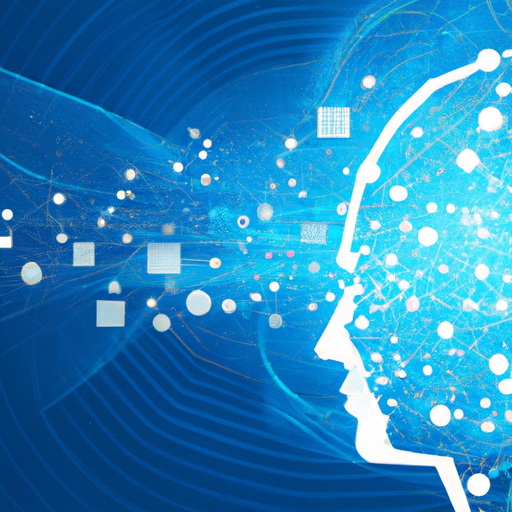Introduction To Artificial Intelligence Machine Learning
Artificial intelligence (AI) and machine learning (ML) are revolutionizing the way we interact with technology.
From smart home devices to personalized recommendations on streaming platforms, AI and ML are becoming integral parts of our daily lives.
But what exactly are these technologies, and how do they work together?
In this article, we’ll explore the fascinating world of artificial intelligence and machine learning.
We’ll break down complex concepts into easy-to-understand segments, providing real-life examples to illustrate their impact.
Whether you’re a tech enthusiast or just curious about the buzzwords, this guide will give you a comprehensive understanding of AI and ML.
What Is Artificial Intelligence?
Artificial intelligence is a broad field that encompasses various technologies aimed at creating systems capable of performing tasks that typically require human intelligence.
These tasks include problem-solving, decision-making, language understanding, and even recognizing emotions.
Imagine having a conversation with a customer service chatbot that accurately answers your questions.
That’s AI at work!
AI systems can be divided into two categories: narrow AI and general AI.
Narrow AI is designed for specific tasks like facial recognition or voice assistants.
General AI aims to perform any intellectual task that a human can do but remains largely theoretical at this stage.
Diving Into Machine Learning
Machine learning is a subset of artificial intelligence focused on enabling machines to learn from data without being explicitly programmed.
It involves training algorithms on large datasets so they can make predictions or decisions based on new input data.
Consider your daily commute using a navigation app like Google Maps.
The app uses machine learning to analyze traffic patterns and suggest the fastest route in real-time.
By continuously learning from new data, these algorithms become more accurate over time.
Machine learning can be supervised or unsupervised:
– Supervised learning involves training an algorithm on labeled data where the outcomes are known
– Unsupervised learning deals with unlabeled data where the algorithm tries to find hidden patterns
Real-Life Applications Of AI And ML
AI and ML have numerous applications across various industries:
– Healthcare: Predicting disease outbreaks, diagnosing illnesses from medical images
– Finance: Fraud detection, credit scoring
– Retail: Personalized shopping experiences, inventory management
– Entertainment: Recommendation systems for movies and music
Take Spotify as an example. The platform uses machine learning algorithms to analyze your listening habits and recommend songs you’ll likely enjoy. These recommendations improve as you use the service more frequently.
Similarly, self-driving cars utilize both AI and ML technologies. They process vast amounts of data from sensors to navigate roads safely. Companies like Tesla are pioneers in integrating these technologies into their vehicles.
The Role Of Big Data
Big Data plays a crucial role in advancing artificial intelligence machine learning.
The more data available for analysis, the better these systems perform.
For instance, social media platforms collect immense amounts of user-generated content daily.
This data helps train algorithms for targeted advertising or content moderation.
However, managing such large volumes requires robust infrastructure. Cloud computing courses often cover essential skills needed for handling big datasets effectively. By leveraging cloud services like AWS or Google Cloud Platform (GCP), businesses can scale their operations seamlessly while keeping costs manageable.
Challenges And Ethical Considerations
Despite their potential benefits, AI and ML pose several challenges:
– Data Privacy: Ensuring user data is protected against misuse
– Bias: Addressing biases in training datasets that may lead to unfair outcomes
– Job Displacement: Automating tasks traditionally performed by humans could result in job losses
To mitigate these issues requires thoughtful regulation combined with ethical practices during development phases—including transparency about how decisions are made using these technologies.
The Future Of Artificial Intelligence Machine Learning
The future looks promising for artificial intelligence machine learning as advancements continue at an unprecedented pace:
1) Enhanced Natural Language Processing (NLP): Improved language models will enable better human-computer interactions through speech recognition & generation capabilities
2) Autonomous Systems Development: From drones delivering packages autonomously within urban environments—to robots assisting elderly care facilities—autonomous systems hold tremendous potential across diverse applications
As technology evolves further—it’s imperative we stay informed about new developments—and consider pursuing educational opportunities such as cloud computing courses or even becoming full stack developers specializing in integrating multiple facets including frontend/backend development alongside cutting-edge innovations powered by artificial intelligence/machine-learning techniques!
Conclusion
In summary—the intersection between artificial-intelligence-machine-learning offers incredible possibilities transforming myriad aspects surrounding us—from healthcare-to-entertainment-finance-retail-and-beyond! By continually embracing innovation responsibly—we stand poised harnessing tremendous potential unleashing future generations driven forward empowered intelligent solutions shaping tomorrow’s world today!

